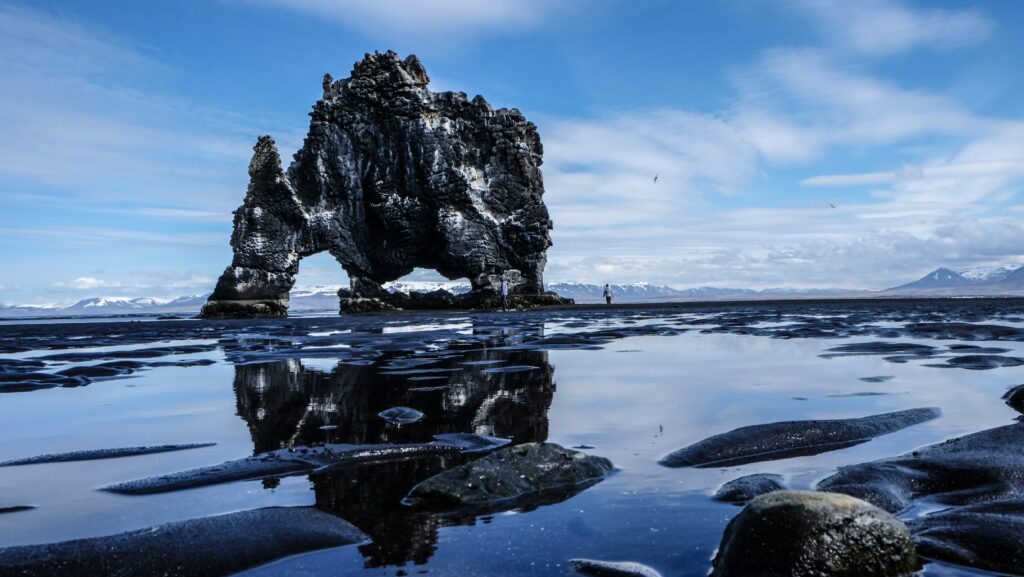Visit Iceland
Weather in Iceland by seasons
Reykjavik and the rest of Iceland have a subarctic climate with cool temperatures year-round, ranging from -1°C to 11°C (30°F to 52°F) in summer, and from -5°C to 1°C (23°F to 34°F) in winter. Precipitation is common throughout the country, with the heaviest rainfall in the south and west. The winter months can be challenging, with short days, long periods of darkness, and the possibility of heavy snow and ice. However, Iceland’s unique landscapes and natural attractions make it a popular destination for tourists throughout the year. Keep in mind the weather can be highly variable and it’s recommended to check weather forecasts and conditions before traveling.
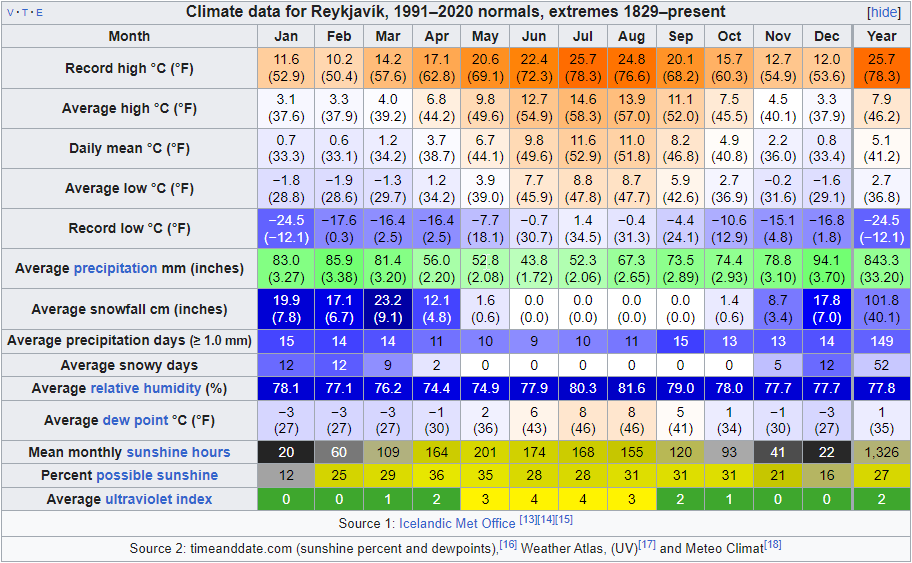
Iceland is a unique destination with a wide range of activities and experiences to offer, depending on the season. Here are a few must-do activities in Iceland for each season.
Summer (June-August)
During the summer months of June to August, Iceland experiences milder weather, with average temperatures ranging from 10°C to 15°C (50°F to 59°F). Precipitation is still common during this season, with average rainfall ranging from 50mm to 70mm per month. However, there is also more daylight during this time, with the average sun time ranging from 18 to 21 hours per day, depending on the location in Iceland. It’s important to note that weather in Iceland can be highly variable, so it’s recommended to check local forecasts and conditions before traveling.
Hiking
Iceland’s rugged landscape offers a variety of hiking trails, from easy nature walks to challenging mountain hikes. Some popular hiking destinations include the Laugavegurinn and Fimmvörðuháls trails, Landmannalaugar, Skaftafell National Park or hike to Fagradalsfjall Volcano.
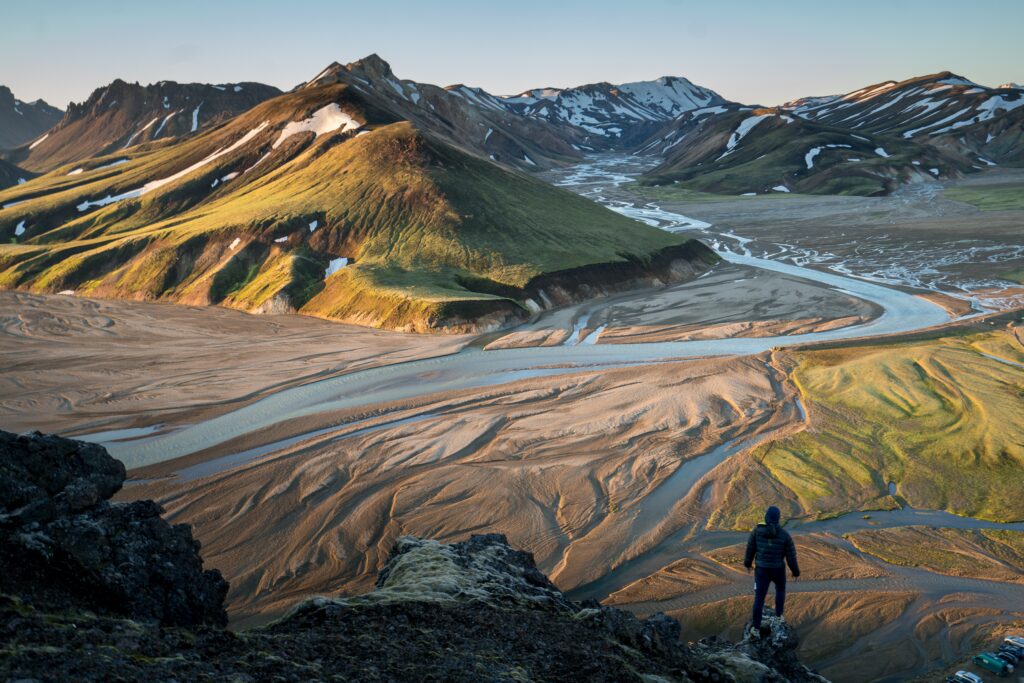
Swimming
Iceland is home to many natural hot springs and swimming pools, such as the Blue Lagoon, the Secret Lagoon, and the Myvatn Nature Baths, which are perfect places to relax and soak after a long hike. Also Iceland has many great swimming pools where you can rest in a hot tub or take a swim.
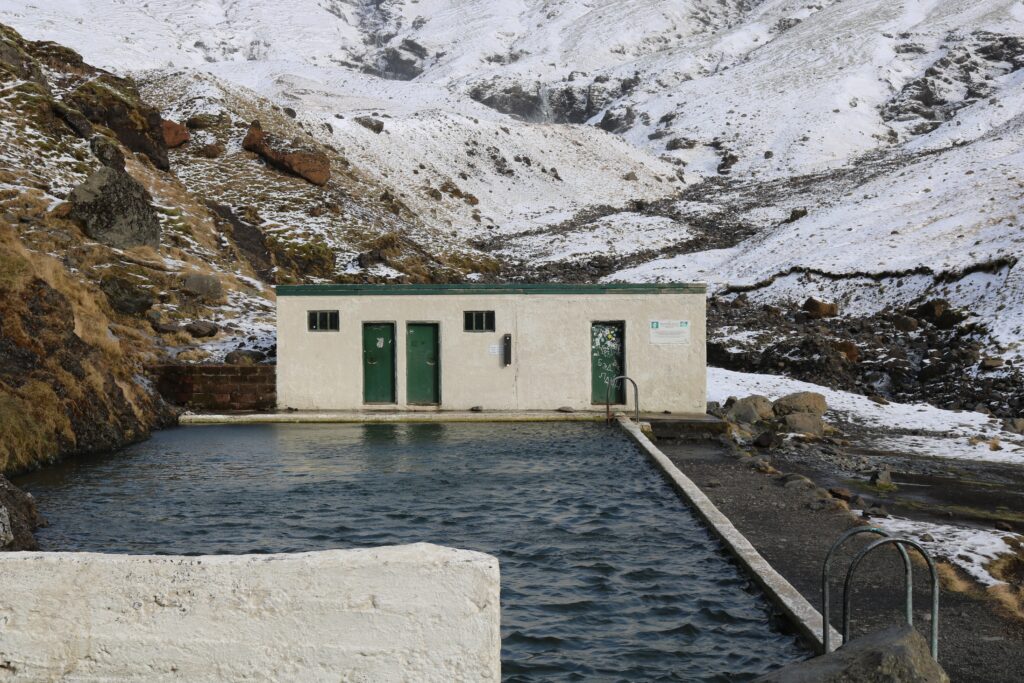
Sightseeing
The summer months offer long days, making it the perfect time to explore Iceland’s many natural and cultural attractions, such as the Reykjanes Peninsula, Golden Circle, Snæfellsnes National Park, Westfjords, Diamond Circle or the Eastfjords.
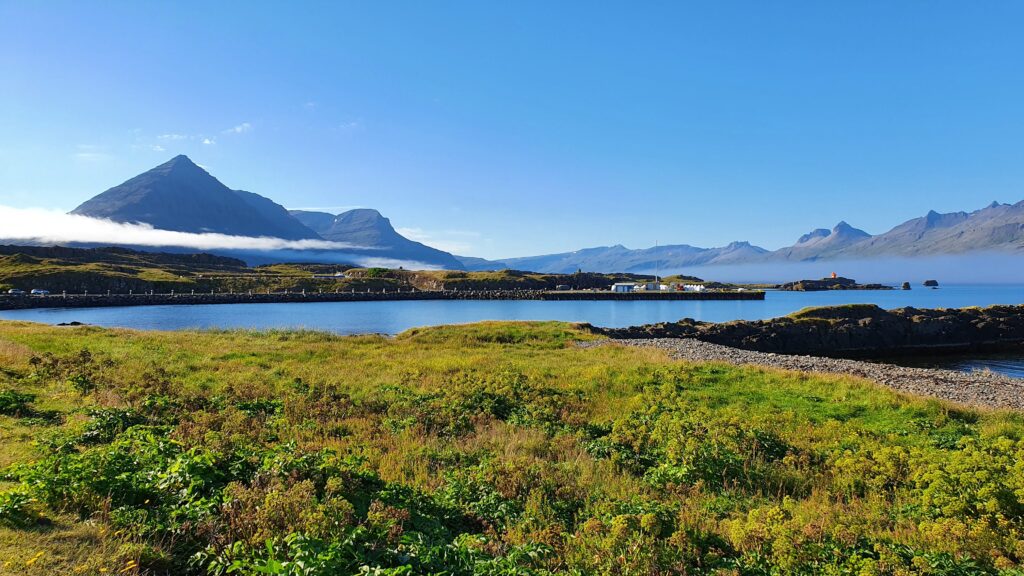
Fall (September-November)
During the fall months of September to November, Iceland experiences cooler temperatures, with average temperatures ranging from 4°C to 8°C (39°F to 46°F). Precipitation levels increase during this season, with average rainfall ranging from 70mm to 90mm per month, and the possibility of snow or sleet in the later part of the season. The average sun time decreases during this time, ranging from 8 to 11 hours per day, depending on the location in Iceland. It’s important to note that weather in Iceland can be highly variable, so it’s recommended to check local forecasts and conditions before traveling.
Northern Lights
Iceland is a great place to see the Northern Lights, and the fall months offer the best chances to see them as the days are getting shorter and the skies are clearer.
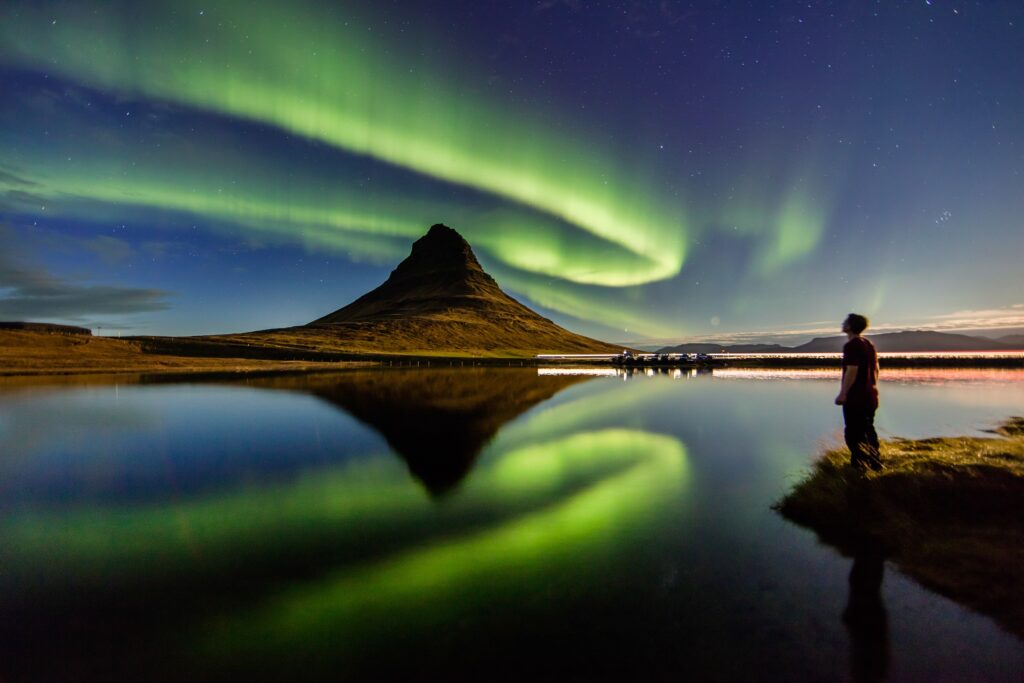
Whale watching
Fall is the best time to see whales in Iceland, with many tour operators offering trips to see humpbacks, minke and even blue whales.
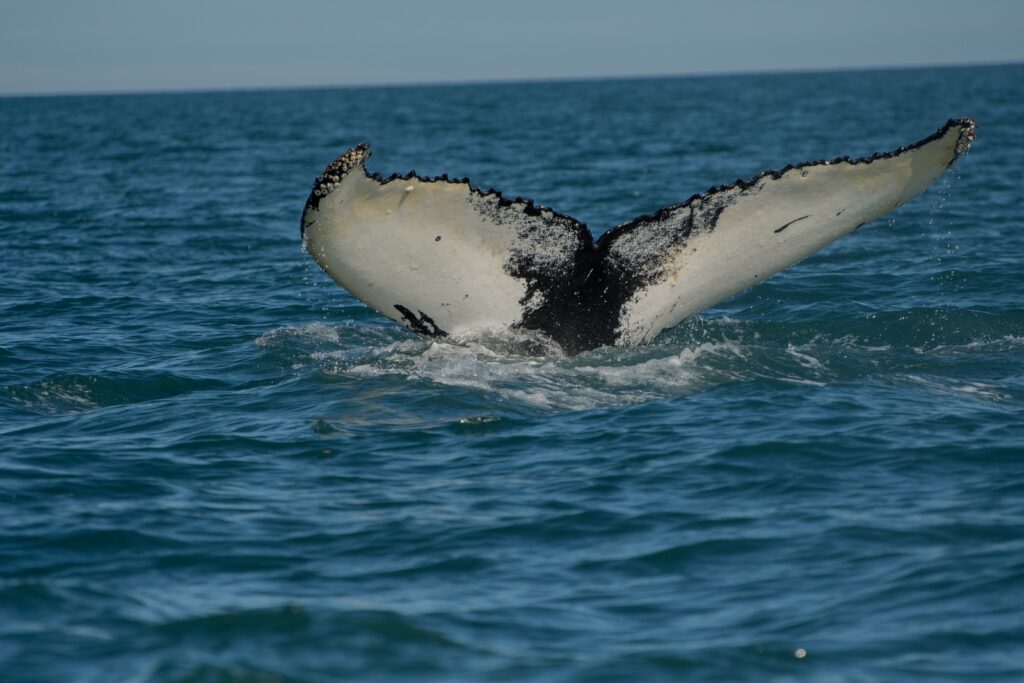
Photography
Fall is a great time to take photos of Iceland’s changing landscape, with the fall colors, the Northern lights and the whales, making it perfect for capturing the beauty of Iceland.
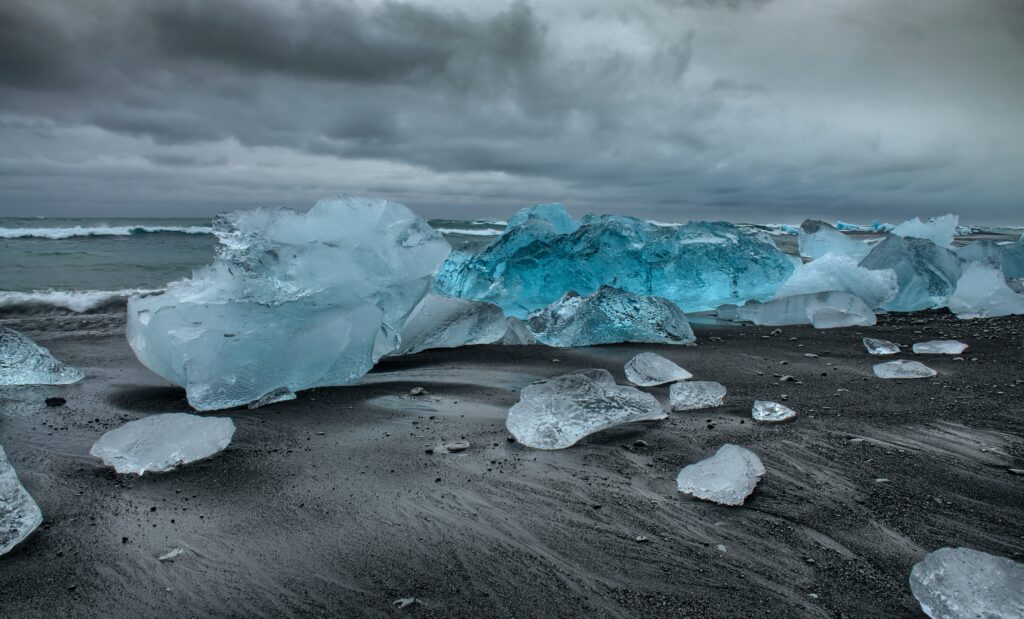
Winter (December-February)
During the winter months of December to February, Iceland experiences cold and often harsh weather, with average temperatures ranging from -1°C to 3°C (30°F to 37°F). Precipitation levels are high during this season, with average snowfall ranging from 20cm to 60cm per month, and the possibility of heavy snowstorms and blizzards. The average sun time is very low, ranging from 2 to 5 hours per day, depending on the location in Iceland. It’s important to note that weather in Iceland can be highly variable, so it’s recommended to check local forecasts and conditions before traveling. Also, during this season, it’s important to take necessary precautions and prepare accordingly to ensure safe travel in potentially challenging weather conditions.
Northern Lights:
Winter months of December to February offer a great chance to see Northern Lights as the days are at the shortest and the skies are clearer.
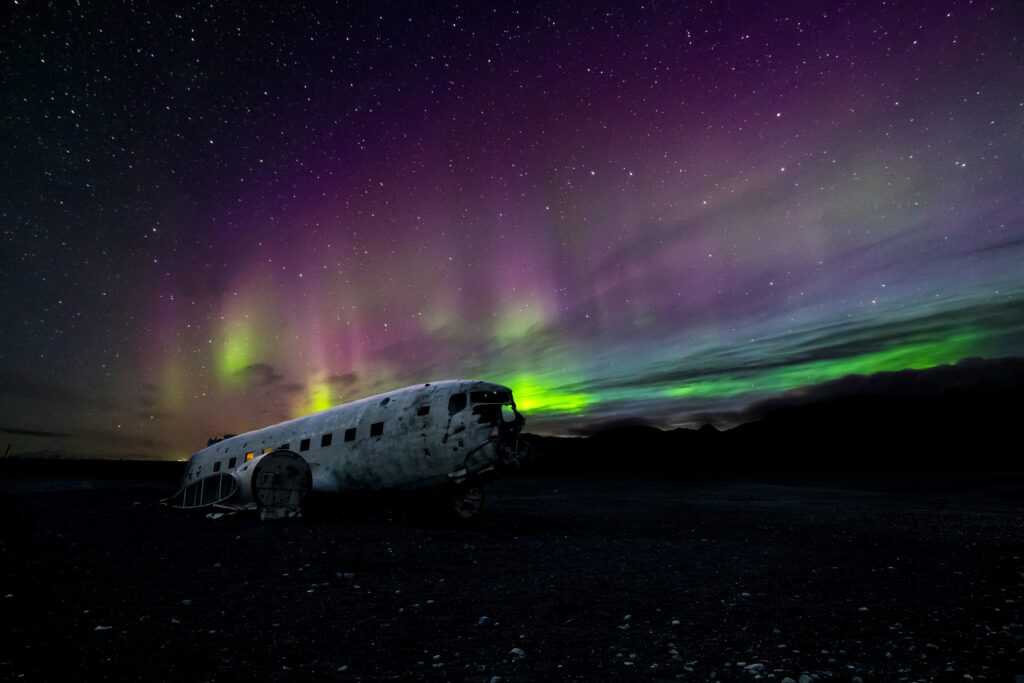
Skiing and snowboarding
Iceland has several ski resorts, such as Bláfjöll, Hlíðarfjall, and Ísafjörður that offer great skiing and snowboarding opportunities.
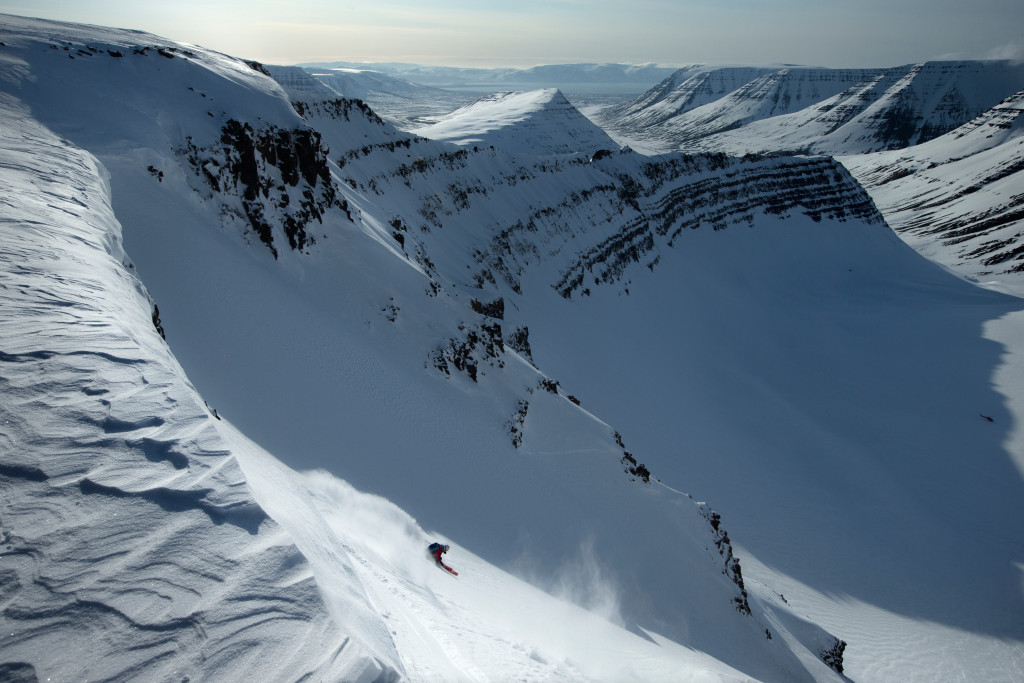
Geothermal baths
Iceland’s many thermal baths and spas, such as the Blue Lagoon, Sky Lagoon, Secret Lagoon, Krauma, Fontana, Hvammsvík, Forest Lagoon, Myvatn Nature Baths and Vök are even more inviting in the winter when the air is cold. These are open all year round for any season.
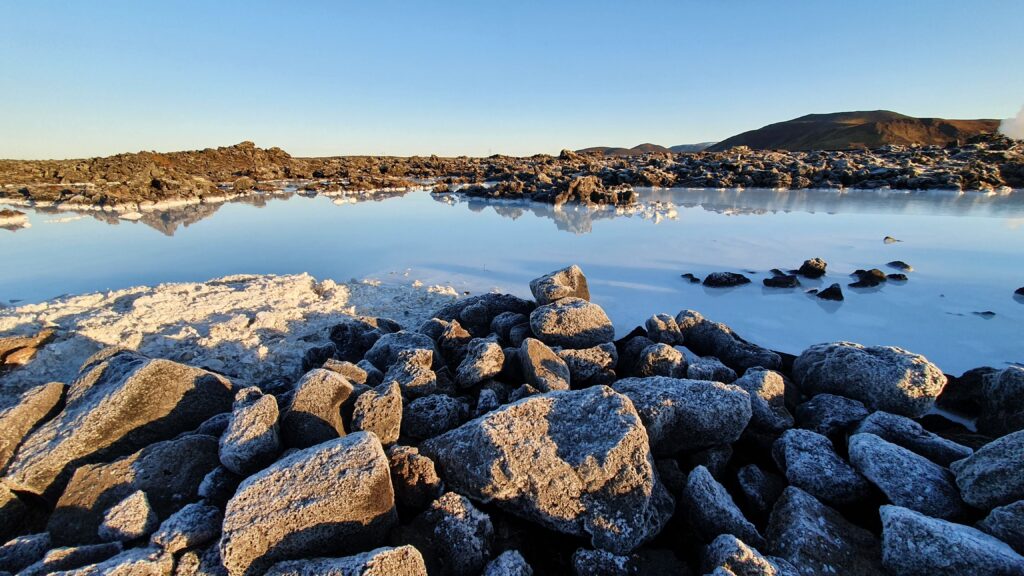
Hot springs
Iceland is known for its geothermal activity, and there are many thermal areas and hot springs to explore. It’s important to always follow posted rules and guidelines when visiting these areas to ensure safety and to minimize impact on the environment. Gunnuhver, Geysir, Krýsuvík, Reykjadalur, Námafjall and Landmannalaugar are few to mention.
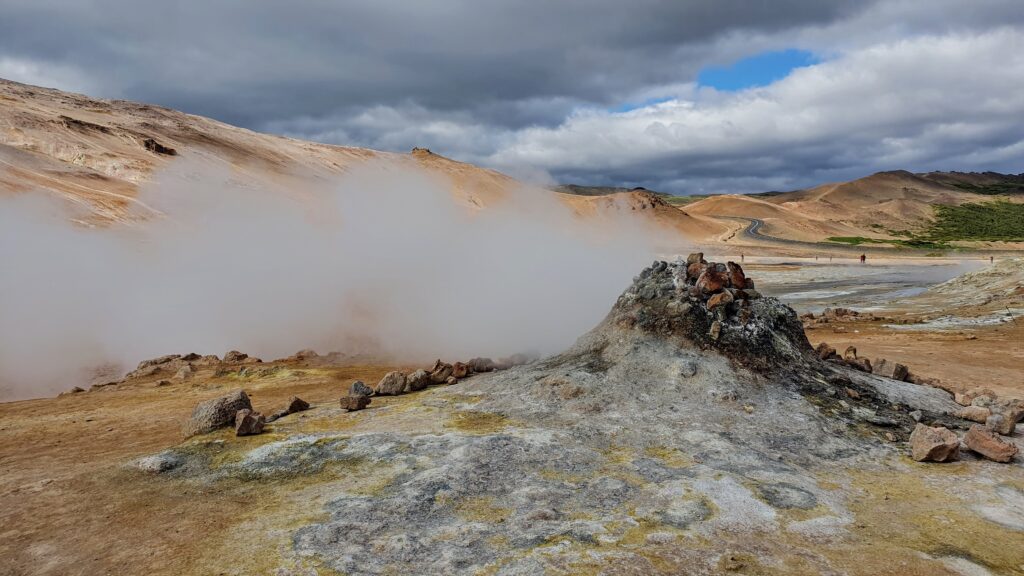
Spring (March-May)
During the spring months of March to May, Iceland experiences milder weather compared to winter, with average temperatures ranging from 1°C to 7°C (34°F to 45°F). Precipitation levels begin to decrease during this season, with average rainfall ranging from 40mm to 60mm per month, and the possibility of some snow or sleet in the early part of the season. The average sun time increases during this time, ranging from 12 to 16 hours per day, depending on the location in Iceland. It’s important to note that weather in Iceland can be highly variable, so it’s recommended to check local forecasts and conditions before traveling. Additionally, roads and hiking trails may still be affected by snow and ice during this season, so it’s important to take necessary precautions and check conditions before embarking on outdoor activities.
Waterfalls
As the snow melts, Iceland’s many waterfalls become more powerful and spectacular, making it a great time to see them. Some popular waterfalls to visit are Gullfoss, Skógafoss, Seljalandsfoss, Goðafoss, and Dettifoss.
Make sure to check the Top 10 list of Icelandic waterfalls selected by ratings and popularity.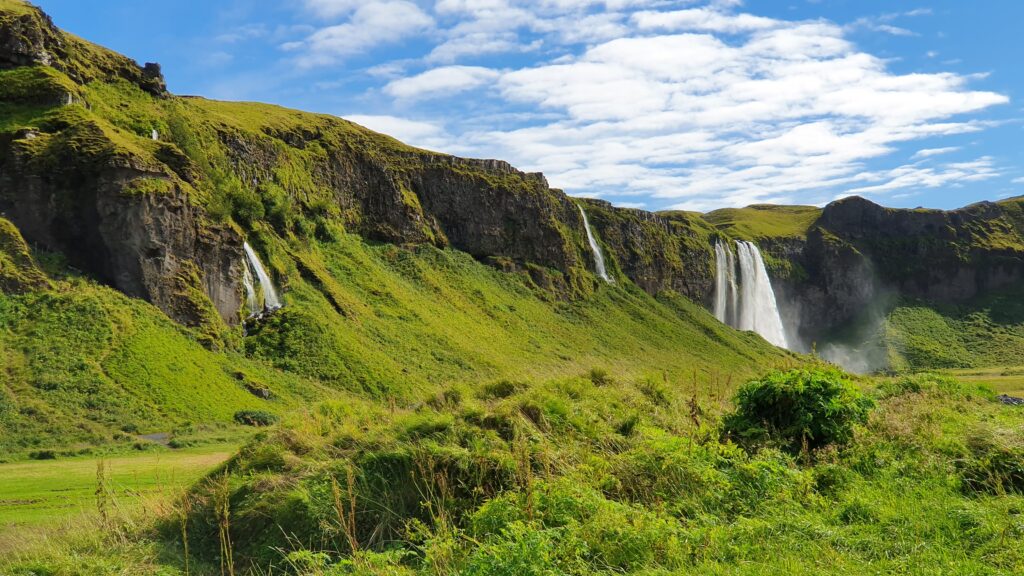
Bird watching
Spring is the best time to see many of Iceland’s bird species, as they return from their winter migration. Great places for bird watching are in Þingvallavatn, Garðskagi, Vestamannaeyjar, Dyrhólaey and Mývatn to name some.
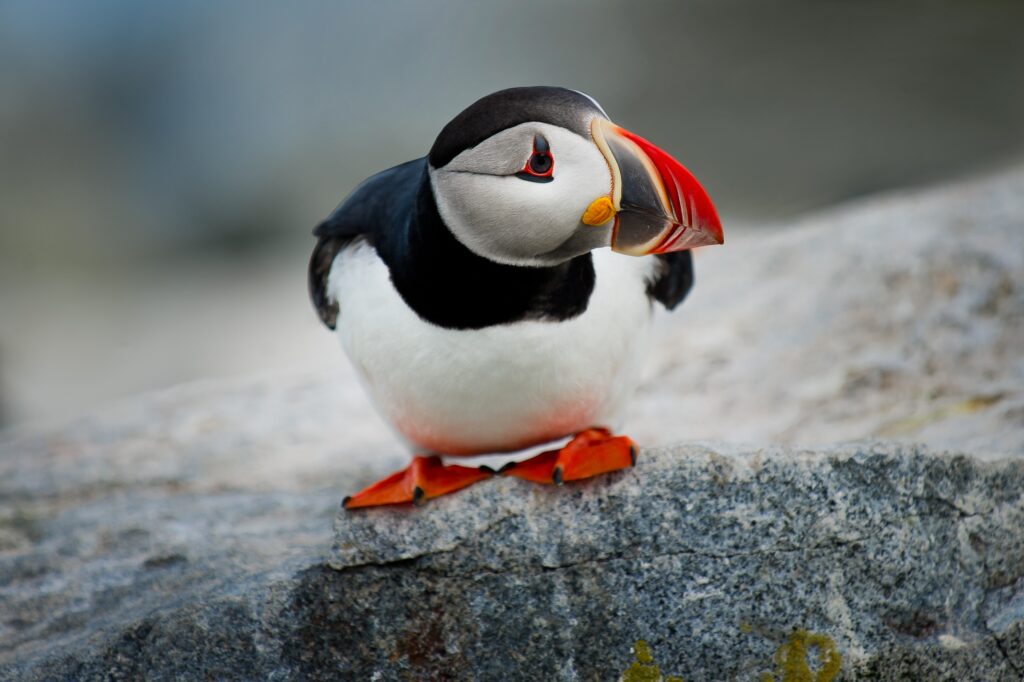
Hiking
Spring is a great time to hike in Iceland, as the snow melts and the trails become accessible again.
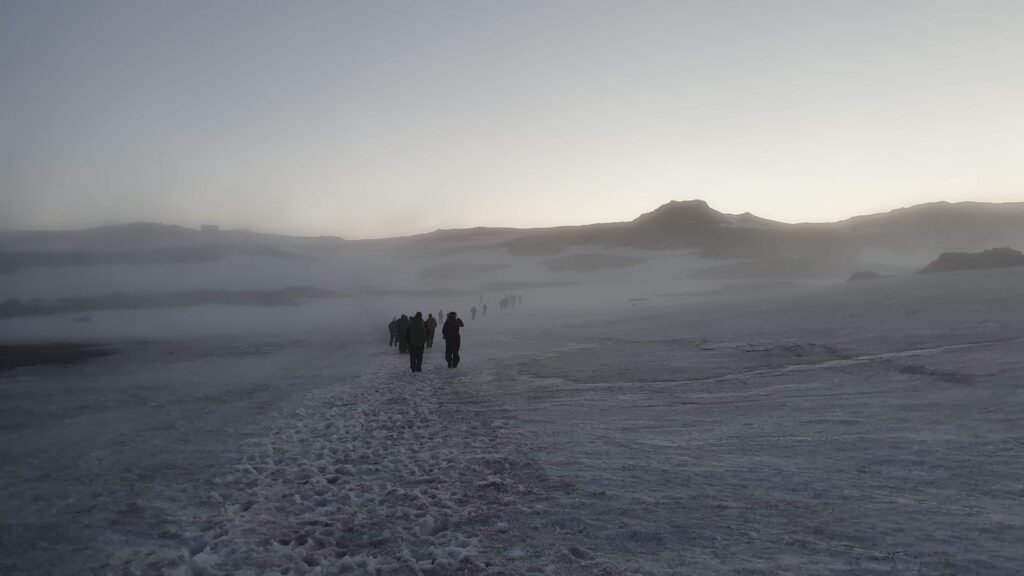
Please note that Iceland’s weather is highly unpredictable and can change quickly, so it’s always a good idea to be prepared for any kind of weather. Also, Iceland has a lot of interesting places and activities to offer, these are just a small selection of many beautiful and unique things Iceland has to offer.
Regions
Iceland is a country known for its rugged natural beauty and diverse landscapes. From glaciers and fjords to hot springs and geysers, Iceland has something to offer for every type of traveler. The country can be divided into several regions, each with its own unique attractions and activities.
Reykjavik – Capital region
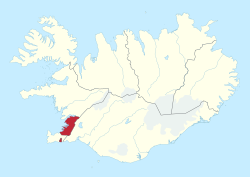
Reykjavik is the capital and largest city of Iceland, located in the southwestern part of the country. It is a vibrant and bustling metropolis that serves as the cultural, economic, and political center of the country. The Capital Region, which includes Reykjavik and its surrounding municipalities, is home to over two-thirds of Iceland’s population
For more about Reykjavik region check Vistitreykjavik.is.
One of the defining characteristics of Reykjavik is its unique architecture, which combines traditional Icelandic style with modern design. The city is dotted with colorful buildings, many of which are adorned with whimsical murals and street art. In addition to its architecture, Reykjavik is also known for its rich cultural heritage, including its museums, galleries, and concert halls, which showcase the work of local artists and musicians.
Another highlight of Reykjavik is its vibrant food and drink scene, which features a wide range of local and international cuisine. Whether you’re in the mood for fresh seafood, traditional Icelandic dishes, or international cuisine, you’re sure to find something to suit your taste in Reykjavik. In addition to its restaurants, Reykjavik is also home to a thriving bar scene, with many bars and clubs offering live music and a lively atmosphere.
The Capital Region is also known for its stunning natural beauty. The area is surrounded by towering mountains, glaciers, and rolling hills, and is dotted with lakes, rivers, and waterfalls. There are many opportunities for outdoor recreation, including hiking, fishing, and skiing.
In conclusion, Reykjavik and the Capital Region offer a unique blend of urban sophistication and natural beauty. Whether you’re looking to immerse yourself in the city’s rich cultural heritage, sample its delicious cuisine, or explore its stunning landscapes, there’s something for everyone in this fascinating region of Iceland.
Reykjanes Peninsula
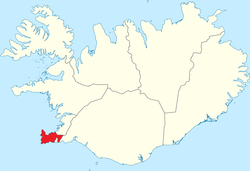
The Reykjanes Peninsula in Iceland is a unique and captivating region that offers a mix of natural beauty and geological wonders. Located on the southwestern tip of the country, Reykjanes is a peninsula that stretches out into the Atlantic Ocean. It is known for its rugged landscapes, hot springs, geysers, and black sand beaches.
For more about Reykjanes Peninsula region check Vistitreykjanes.is
One of the most distinctive features of Reykjanes is its geothermal activity. Here, visitors can witness the power of Mother Nature as steam rises from the ground, hot water gushes out of the earth, and bubbling mud pools hiss and splatter. Some of the most popular geothermal sites in the area include the famous Blue Lagoon, a mineral-rich geothermal spa, and the Seltun Geothermal Area, where you can explore the colorful, otherworldly landscape created by the boiling water and steam vents.
In addition to its geothermal activity, Reykjanes is also home to a number of unique geological formations. The area is dotted with craters, lava fields, and unusual rock formations, many of which can be easily explored on foot. Hiking trails lead to hidden caves, dramatic cliffs, and breathtaking views of the surrounding landscape.
The Reykjanes Peninsula is also rich in birdlife, with many species of seabirds nesting along the coast. Visitors can enjoy birdwatching on the cliffs or take a boat tour to see the birds up close.
Overall, the Reykjanes Peninsula is a must-see destination for those interested in geology, nature, and adventure. Whether you’re looking to relax in the warm waters of a geothermal spa, hike through rugged landscapes, or simply soak in the stunning views, Reykjanes has something for everyone.
For more about Reykjanes Peninsula region check Vistitreykjanes.is.
South Iceland
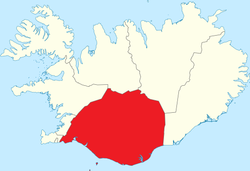
The South Iceland is a region of breathtaking natural beauty and geological wonders. Located along the southern shore of the country, this region offers a diverse landscape of glaciers, waterfalls, black sand beaches, and towering cliffs.
For all about South Coast region check South.is.
One of the main attractions of the South Coast is its glaciers, including the famous Vatnajokull glacier, which is the largest glacier in Europe. Visitors can take a guided tour of the glacier to explore its stunning ice formations and learn about its geological history.
Another highlight of the South Coast is its waterfalls, including the famous Skogafoss and Seljalandsfoss waterfalls. These cascading wonders are surrounded by lush greenery and offer breathtaking views of the surrounding landscape.
The South Coast is also known for its black sand beaches, including the famous Reynisfjara beach, which is known for its dramatic cliffs and basalt columns. The area’s unique geology has created a landscape that is both rugged and awe-inspiring, with towering cliffs, caves, and rock formations that rise up from the ocean.
The South Coast is also rich in wildlife, with many species of seabirds, whales, and seals found in the area. Visitors can take a boat tour to see these magnificent creatures up close and experience the thrill of being surrounded by nature in its rawest form.
In conclusion, the South Coast of Iceland is a must-visit destination for those who appreciate natural beauty and geological wonders. Whether you’re looking to explore glaciers, admire waterfalls, or simply soak in the stunning views, the South Coast has something for everyone.
West Iceland
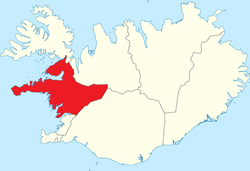
The West Iceland, including the Snaefellsnes Peninsula, is a breathtaking area known for its stunning natural beauty and geological wonders. Located in the northwestern part of the country, the West Region encompasses a diverse landscape of glaciers, waterfalls, black sand beaches, and towering mountains.
For more about West region check West.is.
The Snaefellsnes Peninsula, in particular, is a peninsula that is often referred to as “Iceland in miniature” due to the diverse range of landscapes it encompasses. From the snow-capped peaks of the Snaefellsjokull glacier to the black sand beaches of the west coast, the Snaefellsnes Peninsula offers a unique and varied landscape that is unlike anything else in the country.
One of the main attractions West region are the glaciers Snaefellsjokull glacier and Langijokull glacer.
The former is a dormant volcano that towers over the surrounding landscape. Visitors can hike to the top of the glacier for panoramic views of the surrounding area, or take a guided tour to learn about its geological history, while Langijokull Langjokull glacier is the second largest glacier in Iceland. Visitors can take a guided tour of the glacier to explore its ice formations and learn about its geological history
The Snaefellsnes Peninsula is also home to a number of stunning waterfalls, including the Kirkjufellsfoss waterfall, which is located at the base of the iconic Kirkjufell mountain. Visitors can hike to the waterfall to admire its beauty, or simply relax by its side and take in the surrounding scenery.
In conclusion, the West Region of Iceland is a must-visit destination for those who appreciate natural beauty and cultural heritage. Whether you’re looking to explore glaciers, admire fjords, or simply soak in the stunning views, the West Region has something for everyone.
In addition to its natural beauty, the West Region is also rich in cultural heritage, with a long history of fishing and farming that is reflected in its traditional architecture and way of life. Visitors can learn about the region’s history and culture by visiting its museums, churches, and cultural centers, or simply by speaking with its friendly and welcoming residents.
Westfjords
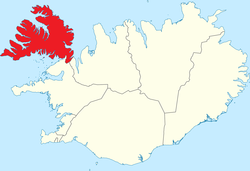
The Westfjords is a remote and rugged corner of the country that is known for its stunning natural beauty and unspoiled landscapes. Located in the northwestern part of the country, the Westfjords are characterized by their steep fjords, rugged cliffs, and pristine beaches.
For more about Westfjords regin check Westfjords.is.
One of the defining features of the Westfjords is its dramatic coastline, which is dotted with steep fjords and rugged cliffs that rise up from the ocean. Visitors can take a boat tour of the fjords to experience their sheer scale and beauty, or hike along the cliffs for panoramic views of the surrounding landscape.
The Westfjords are also home to a number of stunning waterfalls, including the famous Dynjandi waterfall, which cascades down in a series of dramatic drops into a picturesque pool below. Visitors can hike to the waterfall to admire its beauty, or simply relax by its side and take in the surrounding scenery.
The Westfjords are also known for their rich wildlife, including a diverse array of seabirds, whales, and seals. Visitors can take a boat tour to see these magnificent creatures up close, or hike through the region’s unspoiled landscapes in search of rare and exotic wildlife.
In addition to its natural beauty, the Westfjords are also rich in cultural heritage, with a long history of fishing and farming that is reflected in its traditional architecture and way of life. Visitors can learn about the region’s history and culture by visiting its museums, churches, and cultural centers, or simply by speaking with its friendly and welcoming residents.
In conclusion, the Westfjords region of Iceland is a truly unique and unspoiled destination that offers visitors a chance to escape from the modern world and experience the beauty and majesty of nature in its rawest form. Whether you’re looking to hike, fish, or simply relax in this stunning region, the Westfjords has something for everyone.
For more about Westfjords regin check Westfjords.is.
North West Iceland
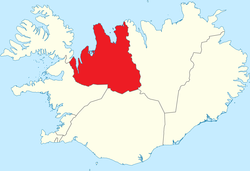
The North West Iceland of Iceland is a breathtaking area characterized by its stunning natural beauty, unique geological features, and rich cultural heritage. Located in the northwestern part of the country, the North West Region is a popular destination for tourists and is known for its glaciers, fjords, waterfalls, and hot springs.
For more about North West Iceland region check Northiceland.is.
One of the main attractions of the North West region is Trollaskagi peninsula between the fjords of Eyjafjörður and Skagafjörður. The peninsula is mountainous, with several peaks reaching over 1,000 meters above sea level. Few permanent glacial ice caps still exist in central Tröllaskagi, but they are all rather small but very popular for hiking and heli skiing.
Another highlight of the North West is its fjords, including the picturesque Skagafjörður fjord, which is surrounded by towering cliffs, rolling hills, and pristine forests. Visitors can take a boat tour of the fjords to experience their beauty, or hike along their cliffs for panoramic views of the surrounding landscape.
In addition to its natural beauty, the North West region is also rich in cultural heritage, with a long history of fishing, trading, and agriculture that is reflected in its traditional architecture and way of life. Visitors can learn about the region’s history and culture by visiting its museums, churches, and cultural centers, or simply by speaking with its friendly and welcoming residents.
In conclusion, the North West region of Iceland is a must-visit destination for those who appreciate natural beauty and cultural heritage. Whether you’re looking to explore glaciers, admire fjords, or simply soak in the stunning views, the North West Region has something for everyone.
North East Iceland
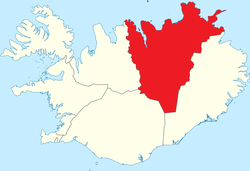
The North East Iceland is a captivating area characterized by its stunning natural beauty, rich cultural heritage, and unique geological features. Located in the northeastern part of the country, the North East Region is a popular destination for tourists and is known for its glaciers, fjords, lakes, and waterfalls.
For more about North West Iceland region check Northiceland.is.
The North East region of iceland is extreemly diverse area that alone covers all variations of what Iceland has to offer. Here are few of it’s main highlights.
Eyjafjörður is a long, narrow fjord that is surrounded by towering mountains and rolling hills. The fjord is dotted with small villages and picturesque farms, and is a popular destination for fishing and boating.
Akureyri, located at the head of Eyjafjörður, is Iceland’s second largest city and is known for its vibrant cultural scene and bustling harbor. Visitors can explore Akureyri’s museums, art galleries, and shops, or simply stroll through its charming streets and admire its traditional architecture.
Goðafoss, also known as the “Waterfall of the Gods,” is a stunning waterfall located on the Skjálfandafljót river. The waterfall is one of Iceland’s most popular tourist attractions and is a must-see for visitors to the North East Region.
Mývatn is a unique and otherworldly lake located in the heart of the North East Region. The lake is surrounded by volcanic craters, geothermal hot springs, and steam vents, and is a popular destination for birdwatching, hiking, and geothermal baths.
Dettifoss, located in the Jökulsárgljúfur National Park, is one of Europe’s most powerful waterfalls and is a must-visit destination for nature lovers. The waterfall is surrounded by rugged cliffs and pristine wilderness, and is a popular destination for hiking and camping.
Ásbyrgi, located in the northern part of the North East Region, is a stunning horseshoe-shaped canyon that is surrounded by towering cliffs and lush vegetation. The canyon is thought to have been formed by a massive flood from the nearby Vatnajökull glacier and is a popular destination for hiking and camping.
In conclusion, the North East Region of Iceland is a must-visit destination for those who appreciate natural beauty and cultural heritage. Whether you’re looking to admire waterfalls, explore lakes, or simply stroll through charming villages, the North East Region has something for everyone.
East Iceland
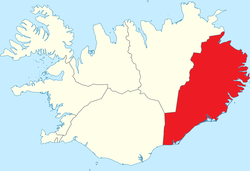
The East Iceland is a picturesque and rugged area known for its stunning natural beauty, rich cultural heritage, and breathtaking landscapes. Located in the eastern part of the country, the Eastfjords are a popular destination for tourists who are looking for a true taste of Iceland’s unique and unspoiled beauty.
For more about East Iceland region check East.is.
Egilsstadir is a town located in the East region of Iceland and is the largest settlement in the area. It serves as a hub for tourism and transportation in the region, offering visitors access to the nearby natural attractions such as glaciers, lakes, and waterfalls. Lagarfljot is a glacial lake that runs through. It is surrounded by lush forests and stunning mountains, making it a popular destination for outdoor enthusiasts who are looking to explore Iceland’s unique and unspoiled beauty including Atlavik and the must see destionation Studlagil canyon.
Another highlight of the East region is its fjords and willages, including the stunning Seyðisfjörður fjord, which is surrounded by towering mountains and rolling hills. Visitors can take a boat tour of the fjords to experience their beauty, or hike along their cliffs for panoramic views of the surrounding landscape.
In addition to its natural beauty, the East region is also rich in cultural heritage, with a long history of fishing, trading, and agriculture that is reflected in its traditional architecture and way of life. Visitors can learn about the region’s history and culture by visiting its museums, churches, and cultural centers, or simply by speaking with its friendly and welcoming residents.
In conclusion, the East region of Iceland is a must-visit destination for those who appreciate natural beauty and cultural heritage. Whether you’re looking to explore glaciers, admire fjords, or simply soak in the stunning views, the East region has something for everyone.
Highlands of Iceland
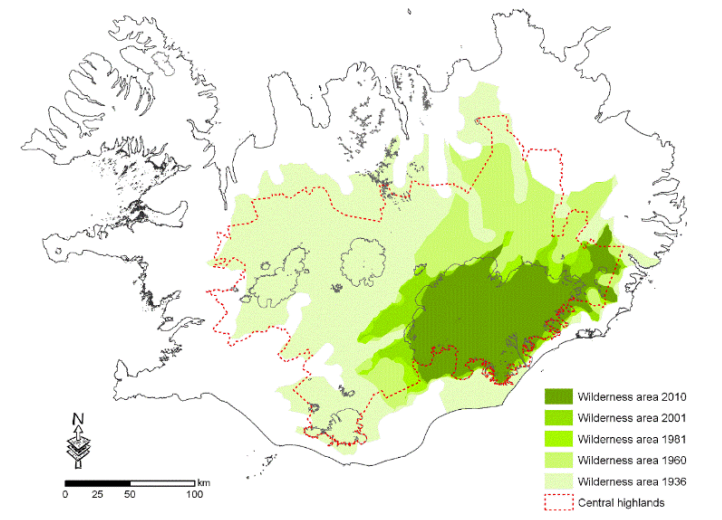
The highlands of Iceland are a vast and rugged area characterized by their stunning natural beauty, glaciers, and unspoiled wilderness. Located in the heart of the island, the highlands are a unique and captivating landscape that is home to some of the country’s most spectacular natural wonders.
For more about the Highland region check South.is.
The highlands are dominated by glaciers, including the impressive Vatnajökull glacier, which covers an area of over 8,100 square kilometers and is the largest glacier in Europe. Visitors can take a guided tour of the glacier to explore its ice formations and learn about its geological history. The highlands are also home to numerous other glaciers, including the Hofsjökull and Langjökull glaciers, which offer visitors the chance to experience Iceland’s rugged and unspoiled wilderness.
In addition to its glaciers, the highlands are also known for their otherworldly landscapes, including volcanic craters, geysers, and hot springs. Visitors can hike through the highlands to explore these unique geological wonders, or simply relax in their natural surroundings.
The highlands are also home to a wealth of wildlife, including reindeer, arctic foxes, and a variety of bird species, which can be observed in their natural habitats. Visitors can take a wildlife tour to see these magnificent animals in their natural environments, or simply explore the highlands on their own and see what they can discover.
In conclusion, the highlands of Iceland are a must-visit destination for those who appreciate natural beauty, glaciers, and unspoiled wilderness. Whether you’re looking to explore the rugged beauty of the glaciers, admire the unique landscapes, or simply soak in the stunning views, the highlands have something for everyone.
In conclusion, Iceland offers a diverse range of regions, each with its own unique attractions and activities. Whether you are looking for outdoor adventure, cultural experiences, or just a peaceful escape from city life, Iceland has something to offer for every type of traveler.
